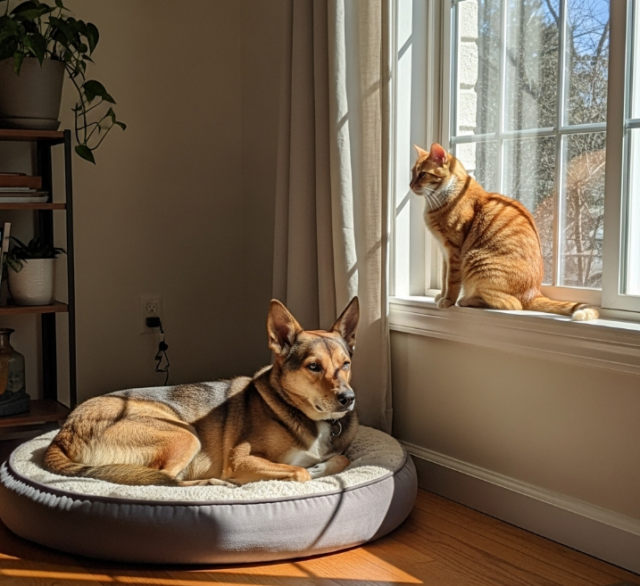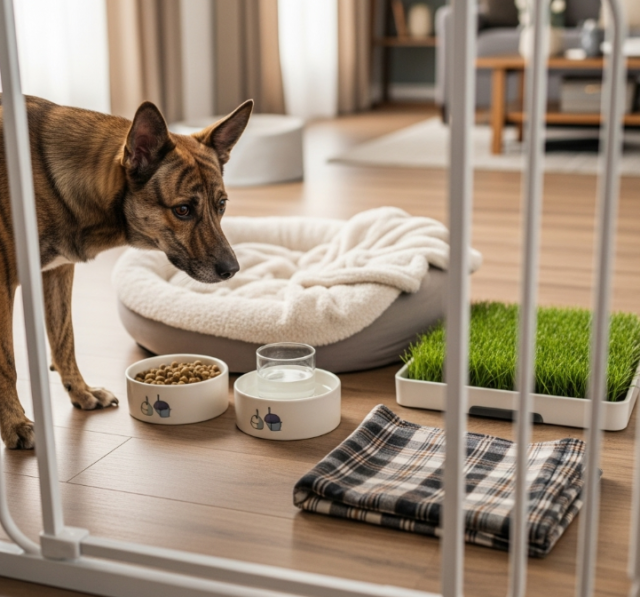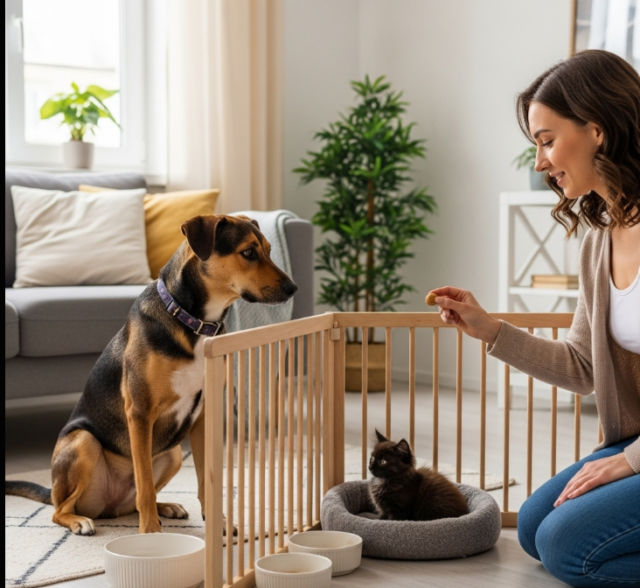So, you just brought home a new furry friend…
…and your resident pet is giving you the side-eye like you just committed high treason. Congratulations — you’ve entered the chaotic, adorable world of blended paw-renthood! But before your living room turns into an episode of Pet Survivor, let’s talk about how to make this transition as drama-free as possible.
Whether you’re adding a puppy to a household ruled by a sassy cat or introducing a second cat to a dog who thinks he’s an only child, one thing’s for sure: animals have feelings too. And just like us, they aren’t always thrilled when someone new starts eating from their bowl or stealing their sunspot.
Let’s dive into the emotional fur-storm and get you the peace treaty you (and your pets) deserve.
🧠 Understanding Pet Dynamics: The Emotional Side of Fur-Siblings
Imagine this: you’re binge-watching your favorite show, wrapped in your go-to blanket, when someone new moves in and grabs it like it’s theirs. That’s kind of what your pet is going through.
Your current pet has routines, favorite spots, and emotional attachments. Introducing a new pet can stir up feelings of:
-
Territorialism (“This couch is mine, thank you very much.”)
-
Jealousy (“Why are you cuddling them?”)
-
Anxiety (“Will I still be your favorite??”)
Dogs may show excitement or dominance, depending on breed and socialization.
Cats, on the other hand, are more like “new phone, who dis?” and prefer slow, calculated introductions with plenty of personal space.
The goal? Reduce drama, avoid hurt feelings (yours and theirs), and help them see each other not as rivals, but as future cuddle buddies or at least tolerable roommates.
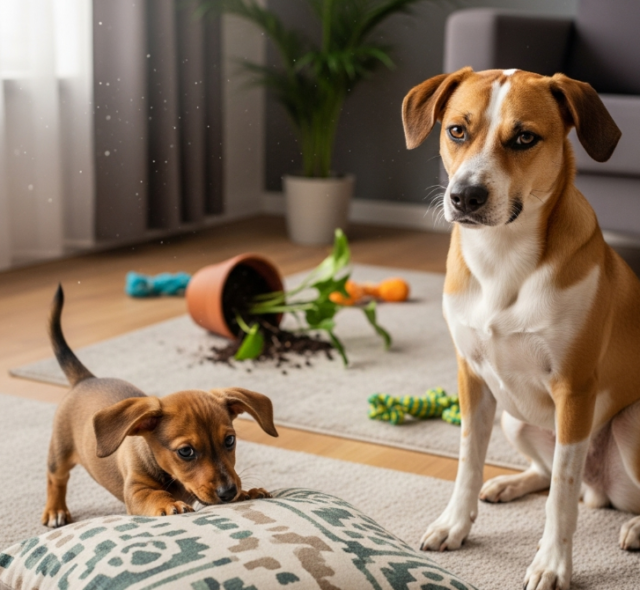
🛏️ Before They Meet – Set the Stage Like a Good Roommate
Think of yourself as the cool landlord setting up a peaceful co-living situation.
✅ Here’s your prep list:
-
Scent swap like a pro: Rub a cloth on each pet and let the other smell it. It’s like giving them the other’s Insta profile before a real meet.
-
Separate but equal setups: Each pet gets their own bowl, bed, and potty area.
-
Gates are gold: Baby gates or playpens help create visual contact without full-on body slams.
-
Controlled feeding time: Feed them on opposite sides of a closed door. They’ll start associating the other’s scent with happy things like food.
This is the “slow burn” of pet friendships. Think Bridgerton romance, not Vegas elopement.
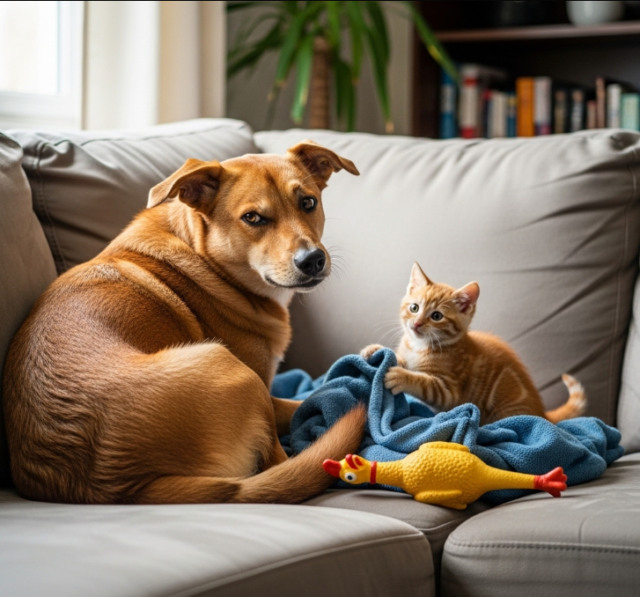
🐕 The First Meeting – Think First Date, Not Blind Date
This is it — the paws meet the floor!
Keep the first encounter short and supervised, like a playdate with backup.
👀 What to watch:
-
Relaxed tails and ears = Good vibes.
-
Stiff posture, growling, or hissing = Take it slow.
🚫 Don’t commit these Pet Parent Sins:
-
❌ Forcing interaction (“Just sniff each other already!”)
-
❌ Ignoring stress signals (tail tucks, backing away, the death stare)
-
❌ Leaving them alone together too early (unless you want to come home to a fur-splosion)
✅ Do this instead:
-
✅ Use treats to create positive association.
-
✅ Redirect tension with toys.
-
✅ Speak in calm, happy tones — no shouting, even if Fluffy goes full diva.
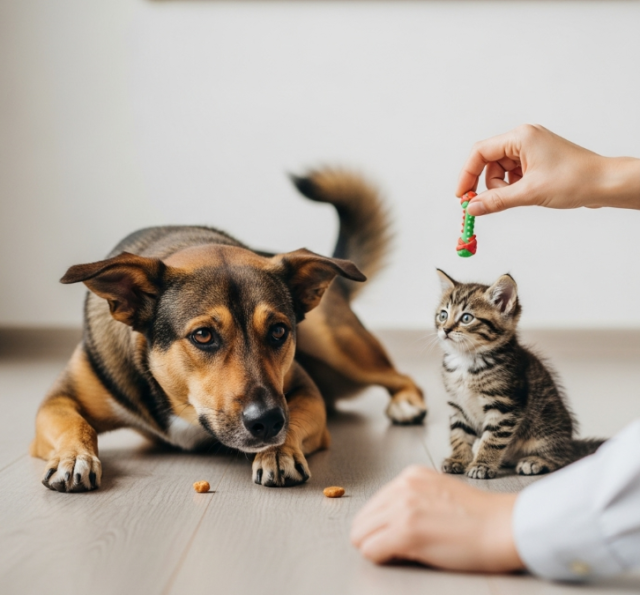
🧩 Managing the First Few Days – Where the Magic (or Mayhem) Happens
Even if the first meeting went well, the next few days are critical.
Set the mood:
-
🕐 Stick to routines: Familiar = Safe.
-
🚪 Keep separate spaces for alone time.
-
🎾 Do bonding activities: parallel walks (for dogs), synchronized play sessions (for cats and playful dogs), and group treats (with distance).
If you’re lucky, you’ll start to see curious tail wags, less side-eyes, and the occasional playful bop.
😬 What to Avoid – Because Mistakes Happen
The classic “Pet Parent Oopsies”:
-
🙈 Letting pets fight it out (“They’ll figure it out” – nope.)
-
🧹 Ignoring subtle signs of distress (a stressed-out cat will hide, a nervous dog might over-groom)
-
🐾 Giving too much attention to the new pet and ignoring the OG floof
Tip: Make the older pet feel like they’re still VIP — because in their mind, they are.
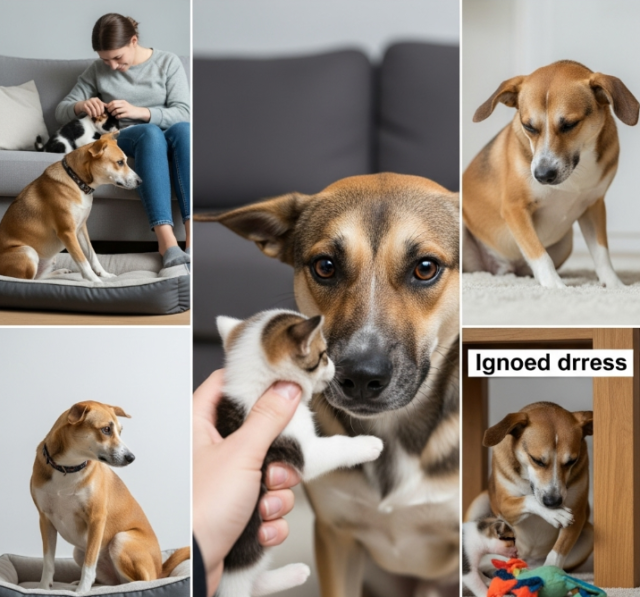
🆘 When to Call in the Pros
If the fur is flying (literally) or one pet is constantly hiding or being aggressive, it might be time to consult:
-
🐾 A vet (to rule out health triggers)
-
🐾 A certified animal behaviorist (they’re basically therapists for pets)
Don’t feel bad — even pets need a little outside help sometimes!
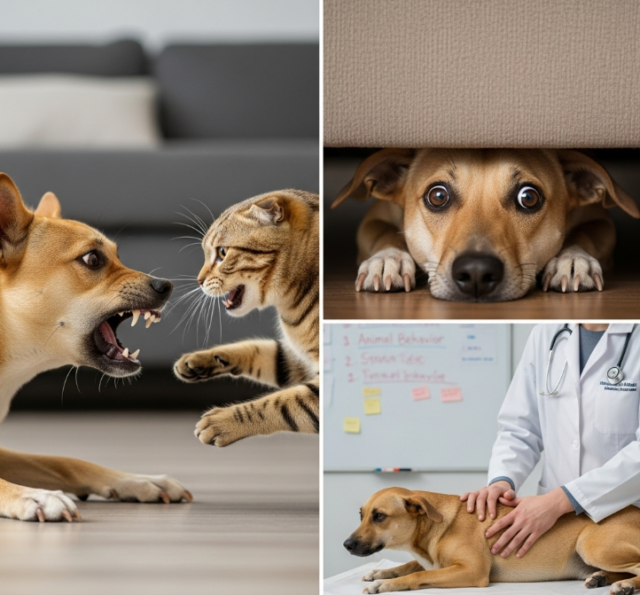
💕 Closing Thoughts: Let the Love Grow
Not every pet duo will become a Disney-style friendship montage. Some just learn to coexist. And that’s okay.
But with patience, empathy, and a few smart strategies, you can help them build trust and maybe — just maybe — share the same sunny windowsill one day.
Remember:
“The best friendships sometimes start with a suspicious sniff.”
